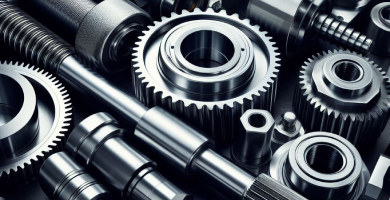Stamped Metal Products
Amaron Rubber is a leading manufacturer and supplier of high-quality stamped metal products.
Stamped metal products, created through efficient and cost-effective metal stamping, offer precise, high-volume parts for diverse industries. At Amaron Rubber, we specialize in large-scale production, providing customization in various metals for applications in automotive, aerospace, electronics, and more. Our commitment to precision and efficiency ensures high-quality, tailored solutions in substantial quantities.



Applications
Stamped metal products find applications in a multitude of industries, showcasing their adaptability. In the automotive sector, they are used for manufacturing fuel tanks, engine components, body panels, and various other critical parts. Aerospace applications include aircraft wings, fuselage components, and structural elements. In the electronics industry, stamped metal products are employed in the production of circuit boards and connectors, ensuring the reliable performance of electronic devices.
Materials
Stamped metal products can be manufactured from a wide range of materials, including conventional ones like steel, aluminum, copper, and brass, as well as exotic materials such as titanium and beryllium. This diversity in material options allows manufacturers to tailor components to meet specific requirements, whether it’s for strength, corrosion resistance, or other specialized properties.
Precision and Efficiency
Metal stamping is the manufacturing method of choice for various industries, including medical devices and aerospace, where precision and reliability are paramount. The process is highly precise and efficient, enabling the production of large quantities of components with tight tolerances, ensuring that each part meets the exacting specifications.
Cost-Effectiveness
The cost-effectiveness of metal stamping is especially pronounced for the production of large quantities of components. The high-speed nature of the stamping process, coupled with minimal material waste, makes it an economically sound choice for manufacturers. It minimizes production costs while maintaining high quality.
Complex Geometries
One of the key advantages of metal stamping is its ability to produce components with intricate and complex geometries that would be challenging or even impossible to achieve with other manufacturing methods. This adaptability makes it an attractive option for industries with diverse and unique design requirements.
Customization
Stamped metal products can be customized to meet the specific design and performance requirements of various applications. This flexibility allows manufacturers to create bespoke components that perfectly fit the needs of their products, ensuring optimal performance and functionality.
Durability
Stamped metal products are known for their durability and ability to withstand harsh environmental conditions. This durability is particularly valuable in applications where components are exposed to extreme temperatures, moisture, or physical stress, such as in the automotive and industrial sectors.
Automated Production
Metal stamping frequently involves automated systems that reduce the need for manual labor. This automation enhances consistency and precision while also lowering production costs and improving overall efficiency.
Tooling and Die Design
The design and maintenance of specialized tooling and dies are critical factors in the quality of stamped metal products. These tools are tailored to match the specific component design and play a central role in achieving high-quality results.
Environmental Considerations
Metal stamping is an environmentally friendly manufacturing process. It minimizes material waste and energy consumption, making it a sustainable choice for many manufacturers. This eco-friendly aspect aligns with the growing emphasis on sustainability and responsible manufacturing practices in today’s industrial landscape.

